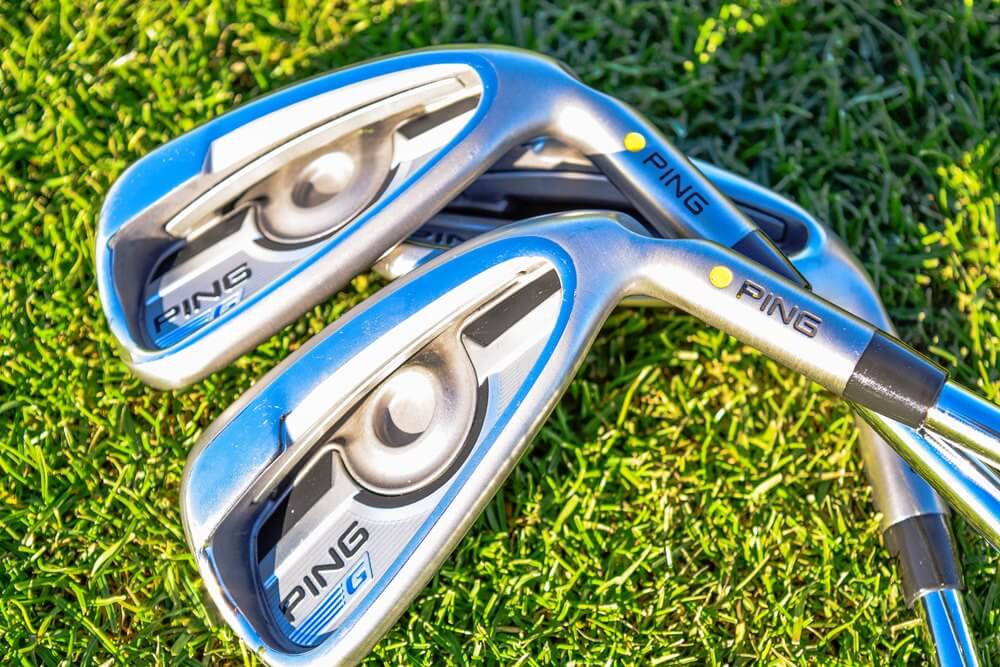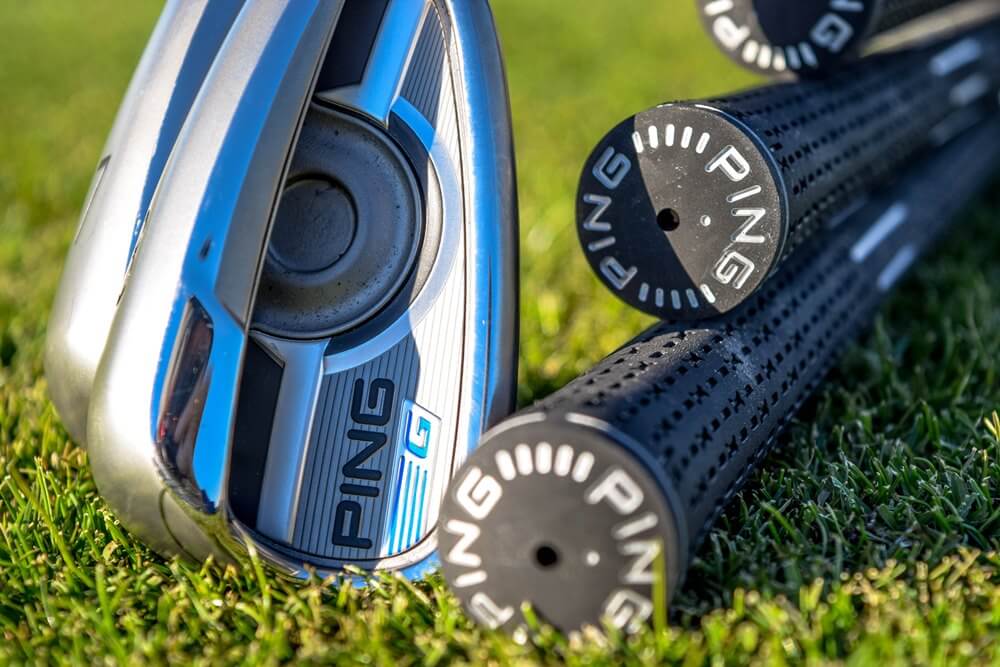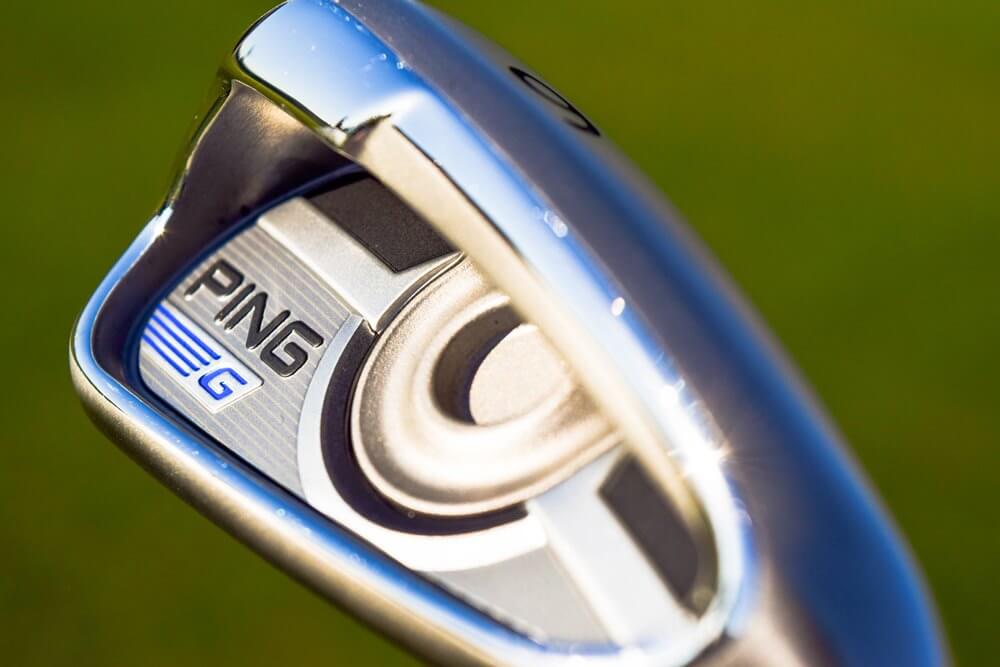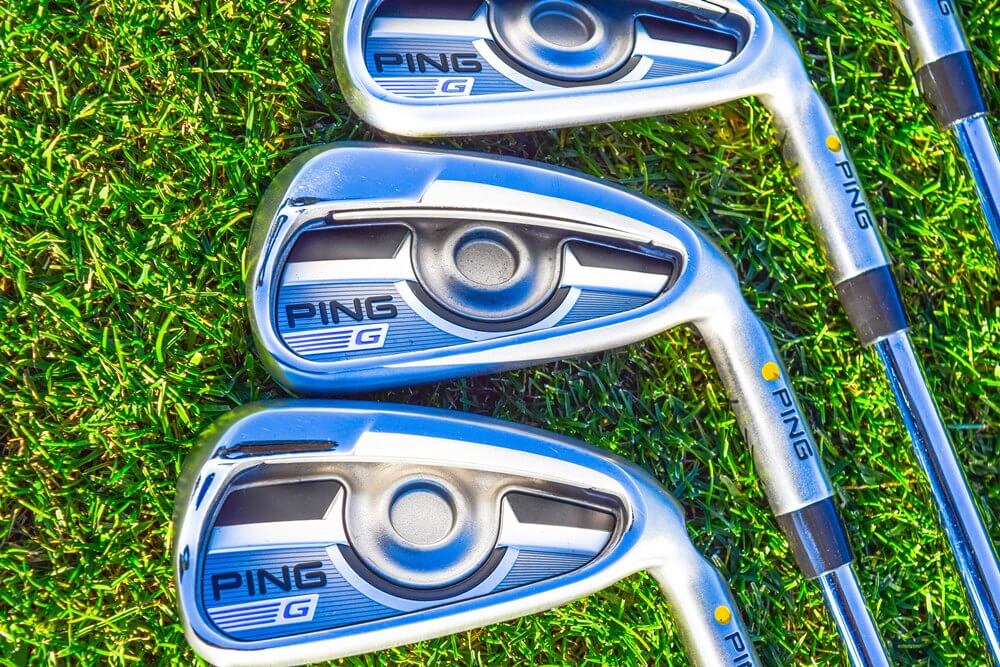Do You Really Need To Hit Your Irons Farther?
When it comes to irons distance, there are two schools of thought.
School 1 says “Why do you want to hit your 8-iron farther? You have a 7-iron, don’t you?”
School 2 says “Hitting an 8-iron from 165 is way better than hitting a 6-iron from 165 since you’ll be able to hit it closer because, despite having more loft, you can hit the 8-iron the same distance due to the geometry and trigonometry of the impact. You can have more delivered face angle variability and still hit it closer to the hole if you have a club with more loft, based on the impact angle and some of the concepts around the D-plane.”
Okaaay….
We recently spent an entire day talking golf technology with PING’s engineering, innovation and product development team – two of them are Ph.D’s – and I can say with absolute certainly the mascot for School 2 looks a lot like this guy:
No Numbers, Just “G”
PING introduces its new G iron today. Like I, it’s just G. No more numbers, and the story they’re telling isn’t just about distance, it’s about the right kind of distance.
“Our motivation is to help people play better golf,” says Marty Jertson, PING’s Product Development Director. “Our challenge is to deliver improved forgiveness and improved distance, while also considering how high the ball is going to go, the landing angle and being able to stop it on the green.”
More distance isn’t terribly difficult to achieve, just ask any loft-jacker. But making the ball go farther, fly higher and stop faster without jacking previous model’s lofts…that’s not so easy.
The G replaces the G30 in PING’s starting lineup, and has some pretty wild technology that PING says can do just that – all with the forgiveness of a puppy.
Cor-Eye For The G Guy
Face deflection is the tech story in today’s irons. The more the club face flexes or bends at impact, the more ball speed you’ll get. TaylorMade’s RSi and PSi irons have Face Slots, while Wilson Staff’s new C200’s feature FLX Face Technology.
Last summer, PING introduced Cor-Eye Technology in its G-Max irons.
“It does a couple of amazing things,” says Jertson, “It launches the ball higher, with more ball speed. That’s coupling something that doesn’t normally go hand in hand.”
With Cor-Eye, PING offers a super-thin face that flexes more on impact over the entire face.
But squeezing Cor-Eye into a comparatively smaller game-improvement head (have you seen the G-Max?) isn’t as easy as it sounds.
The G Spot
The most visible part of G’s Cor-Eye Technology is, well, the Cor-Eye – that circle-looking thingy on the back of the club head. The key is thinning both the face and the sole-to-face transition area. That, says PING, makes the club face act more like a diving board and less like a drum, creating more ball speed and higher launch.
Does any of this help? PING says G’s face bends 4 times more than the G30, producing 1.25 mph more ball speed and a 0.5* higher launch angle with an average 7-iron swing speed. PING says that’ll deliver roughly 5 more yards.
“This is really cool for us,” says Jertson. “We’re able to keep the same loft and length specs (as G30), while delivering higher launch, more carry distance and improved gapping throughout the entire set.”
PING says G spins roughly 250 RPM less than G30, but still has similar on-the-green “hit ‘n hold” capabilities.
Golly G: Hyper 17-4
Golf has this habit of mistaking (or misrepresenting) evolution for innovation, and then celebrating the minutiae. PING, however, has done something pretty interesting with G you should probably pay attention to, especially since you can’t actually see it.
To make the G’s face flex like it does, you need a material that’s very ductile, but also very strong so it won’t break. The material also has to be flexible enough to bend 4 to 5 degrees for loft and lie adjustment, yet stiff enough to stay bent.
The G30 was made from 17-4 stainless steel – a very common material in golf. But PING has figured out how to transform regular 17-4 steel into a strong, ductile, stiff, flexible mélange of metallurgy it calls Hyper 17-4. A unique, 2-stage heat treating process – patented by PING – basically reboots the molecular structure of 17-4 and makes it Hyper 17-4.
“After you cast a product you need to reset what’s called the micro-structure, or the ‘bones’ of the material,” says PING project engineer Matt Simone. “You reset it with the first stage at high temp, and the lower-temp second stage is where you really start to lock in exactly what 17-4 can do.”
Let’s keep this simple: Stage 1 preps the steel. Stage 2 transforms the elements based on time and temperature, simultaneously strengthening 17-4 while also restoring its ductility.
Hyper 17-4 is something PING has literally “cooked up.” To put the transformation into perspective, the 40% difference in strength between regular and Hyper 17-4 is roughly the same as the difference between steel and titanium.
“But 17-4, because it’s so versatile, allows us to have the higher strength we need in a cast product while maintaining ductility,” says Simone. “If we weren’t able to maintain that ductility we’d be very limited in the kind of lie angles we could offer. It would not work for us.”
AWT 2.0 – The Reboot
When it comes to shafts, PING traditionally dances to its own playlist. For the G, PING is reviving an oldie but goody with AWT 2.0.
AWT stands for Ascending Weight Technology and is what it says. Shaft weights ascend – they get heavier as the irons get shorter.
PING says lighter long iron shafts can help.
“When we talk to people, they want long irons that are easy,” says Jertson. “Closer to the hole you want short irons with a lot of precision and the right feel and feedback you’d expect.”
PING says feel was an issue with the original AWT shafts. The lighter long iron shafts felt too soft, while the heavier short irons shafts felt too crispy and harsh.
To fix that, an AWT 2.0 set employs three different step patterns and variable wall thickness. “That way we can tweak tip stiffness from a feel standpoint, but we can have lighter long irons for more club head speed and the ease of squaring the club up,” says Jertson.
Both the Regular and Stiff flex long iron shafts start under 100 grams. R-flex wedge shafts top out at 105 grams and the stiff at 110 grams.
The X-flex version, however, is in a different weight class entirely.
PING says Power Fitters will have a field day hard-stepping and soft-stepping the AWT 2.0’s to dial in a set for a player. Also, that weird weight difference between your 3 or 4 hybrid and your longest iron won’t feel so weird.
“That’s part of the reason players still struggle with long irons,” says Jertson. “They’re so much heavier in total weight – it impacts your closure rate, your probability to mishit right, or just having that club in your bag that you have to consciously adjust to the weight and balance and program in a different swing.”
Does G Deliver?
So, does all this do anything? Does the G pack any Gee-Whiz?
Our range session was fascinating. These G’s are silly-easy to hit, even for PING – sickeningly consistent, very high and very straight. Distance isn’t mind-blowing, but isn’t a drawback, either.
Is Cor-Eye forgiving? Well, occasional mishits weren’t atrocious – the added forgiveness might mean the difference between the front fringe and the front bunker.
G feel was definitely an attention-getter. My experience with PING’s G series was one season gaming G15’s –easy to hit, but not overly long with a somewhat harsh feel. One season was enough. The G, however, feels noticeably more pleasant. You can’t call it “buttah-soft,” but the diving board face affect is noticeable.
If you like to “work” the ball, the G may not be for you and really isn’t designed for you. The G is aimed squarely at the traditional G-series player: the mid-handicapper who struggles with long and mid-irons, or even the 6-10 handicapper looking to make the game a tad easier.
The G’s offset is the same as G30, but a slight hosel redesign – and a ferrule – soften the visual. Topline thickness is the same as G30, but PING beveled the backline, again softening the visual.
Pricing and Availability:
The G, with AWT 2.0 stock, is priced at $110 per club. Dynamic Gold (S300, X100), Project X (5.0, 6.0), DG XP 95 (R, S) and NS Pro Modus 105 are no up-charge options.
Stock graphite is the PING CFS. All aftermarket graphite shafts will carry an up-charge.
Pre-orders for the G start today, and authorized PING fitters are armed and ready to go. Shipping starts February 11th.



























Ginette
8 years ago
Hi,
I just bought the Ping G irons with the steel shafts. They are so nice to hit. I love them.
I replaced my old titleist DCI oversize irons.
I tried the new titleist API 1 and 2 but the Ping G’s where so nicer to hit feel wise.